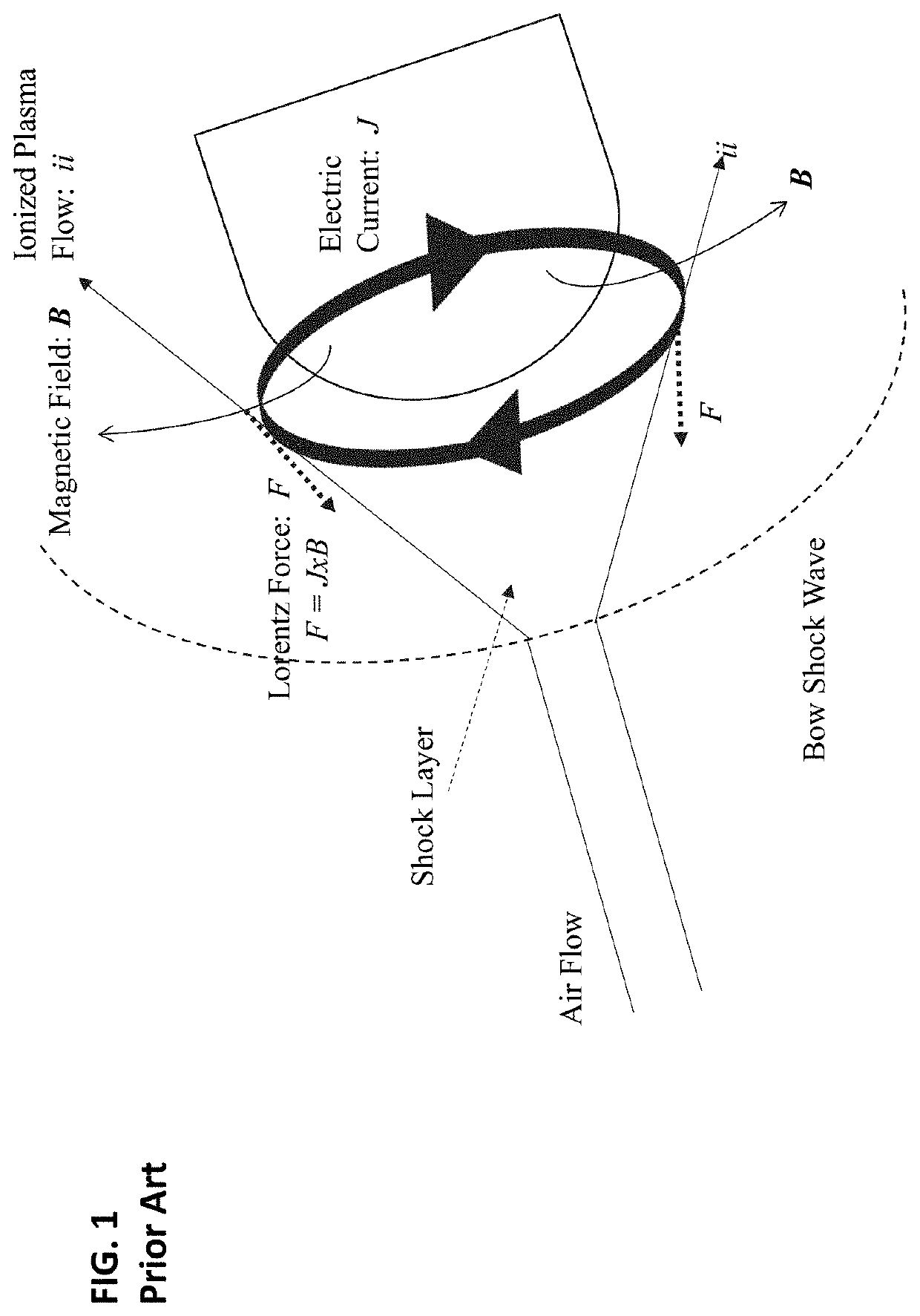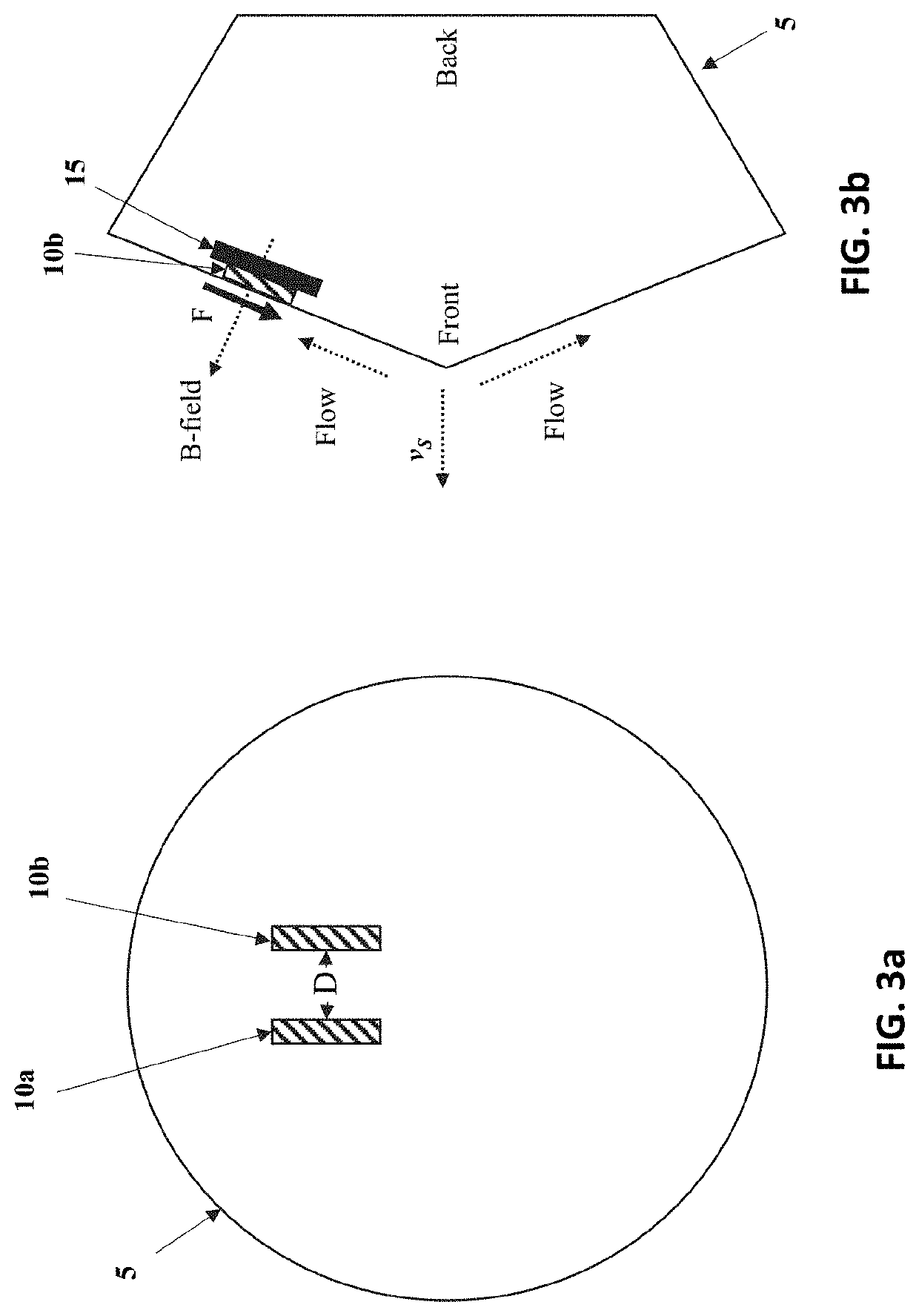Electrode design for lift augmentation and power generation of atmospheric entry vehicles during aerocapture and entry, descent, and landing maneuvers
a technology of electric motors and aerocapture vehicles, which is applied in the field of magnetic hydrodynamic flow control systems for spacecraft aerocapture and entry, descent, landing maneuvers, etc., can solve the problems of increasing lift, insufficient entry to neptune and other worlds with atmospheres, and the concept of l/d aerocapture still requires over 10 years of cruise tim
- Summary
- Abstract
- Description
- Claims
- Application Information
AI Technical Summary
Benefits of technology
Problems solved by technology
Method used
Image
Examples
Embodiment Construction
[0026]The MHD approach in the present embodiments substantially improves the existing processes in that smaller magnetic fields, requiring far less mass, are placed away from the forebody of the spacecraft to produce Lorentz forces that augment the lift and the drag forcesfor guidance, navigation, and control of the spacecraft, as explained herein. The embodiments described below facilitate lift generation for enabling the use of blunt bodies and other aeroshell shapes to meet stringent entry parameters for several mission destinations of interest to NASA, including Neptune and Mars. More particularly, the embodiments herein provide for a (MHD) flow control system which provides for additional thermal protection of the electrodes.
[0027]It has been documented and well understood how the principles of MHD could be applied to entry bodies to reduce thermal stresses on the aeroshell as well as to augment drag and to harvest atmospheric gases and to generate electrical power.
MHD Theory f...
PUM
 Login to View More
Login to View More Abstract
Description
Claims
Application Information
 Login to View More
Login to View More - R&D
- Intellectual Property
- Life Sciences
- Materials
- Tech Scout
- Unparalleled Data Quality
- Higher Quality Content
- 60% Fewer Hallucinations
Browse by: Latest US Patents, China's latest patents, Technical Efficacy Thesaurus, Application Domain, Technology Topic, Popular Technical Reports.
© 2025 PatSnap. All rights reserved.Legal|Privacy policy|Modern Slavery Act Transparency Statement|Sitemap|About US| Contact US: help@patsnap.com



